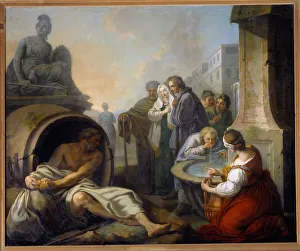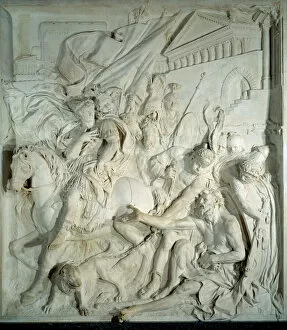Diogene Of Sinope Known As The Cynic V Collection
"Diogenes of Sinope: The Cynic Philosopher Who Challenged Alexander the Great" In ancient Greece, Diogenes of Sinope emerged as a prominent figure in philosophy
All Professionally Made to Order for Quick Shipping
"Diogenes of Sinope: The Cynic Philosopher Who Challenged Alexander the Great" In ancient Greece, Diogenes of Sinope emerged as a prominent figure in philosophy. Known as the cynic philosopher, he lived from around 413 to 327 BC and left an indelible mark on history. One of his most famous encounters was with none other than Alexander the Great. Picture this: Diogenes sitting near his lantern, symbolizing his relentless search for truth and honesty. As Alexander approached him, intrigued by this eccentric thinker, their meeting became legendary. It was a clash between two great minds; one representing power and conquest while the other embodied simplicity and wisdom. Diogenes broke societal norms with his unorthodox lifestyle. He famously resided in a barrel, rejecting material possessions that others deemed necessary for happiness. This unconventional choice reflected his belief that true fulfillment lies not in wealth or status but in living virtuously. The encounter between Diogenes and Alexander inspired countless artists throughout history. Pierre Puget's preparation drawing titled "Alexandre and Diogene" captures this momentous event beautifully. Another notable artwork is Nicolas Poussin's painting depicting Diogenes throwing away his earthly desires. But it wasn't just artistic depictions that immortalized Diogenes; even statues were moved by his presence. He would ask for alms from these lifeless figures to emphasize society's lack of compassion towards its fellow human beings. Despite their differences, both men recognized each other's brilliance during their conversation. They engaged in philosophical discourse that challenged societal norms and questioned the meaning of existence itself. Today, we remember Diogenes as an influential figure who sought to expose hypocrisy and encourage self-reflection among individuals. His teachings continue to inspire us to question our own values and live authentically. So let us raise our glasses to Diogenes of Sinope.













